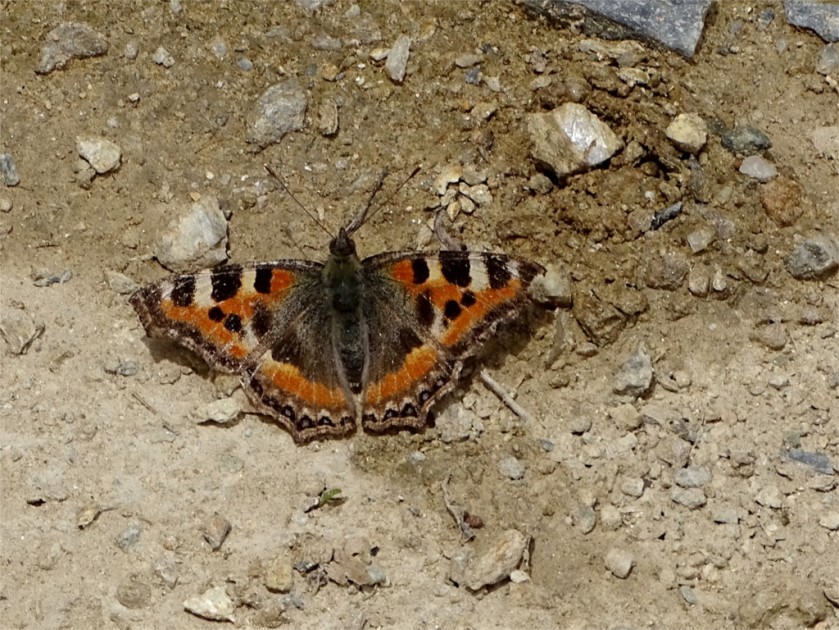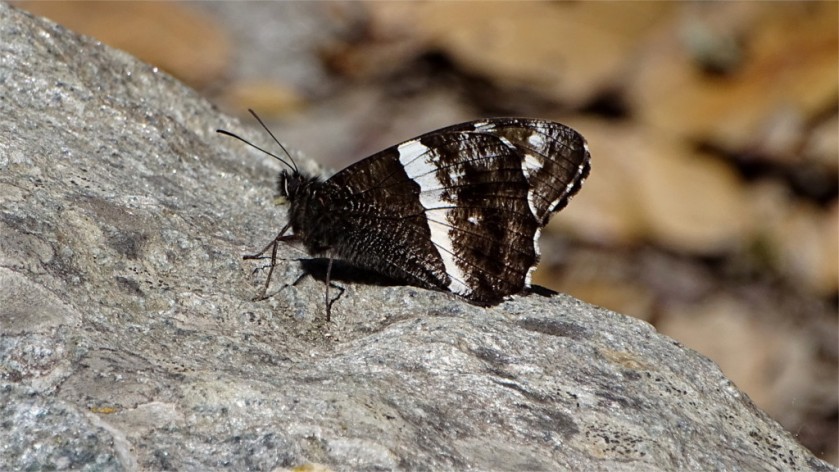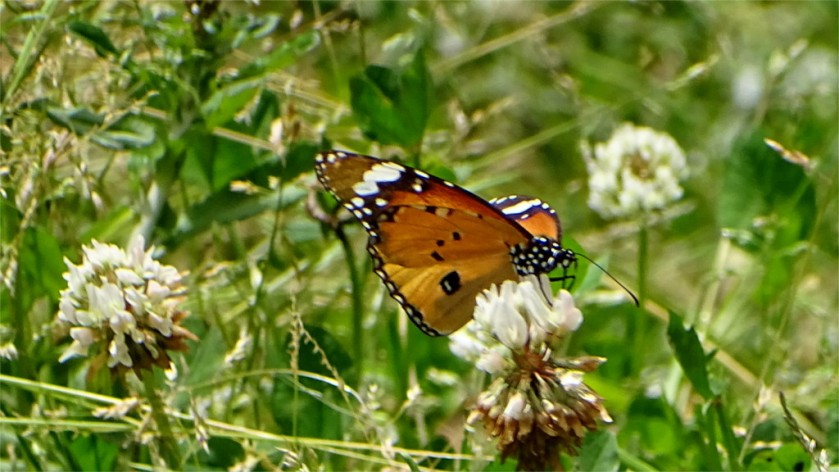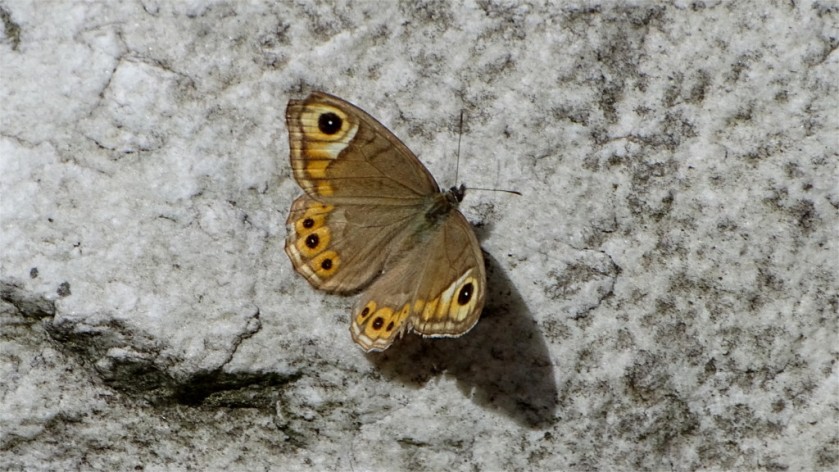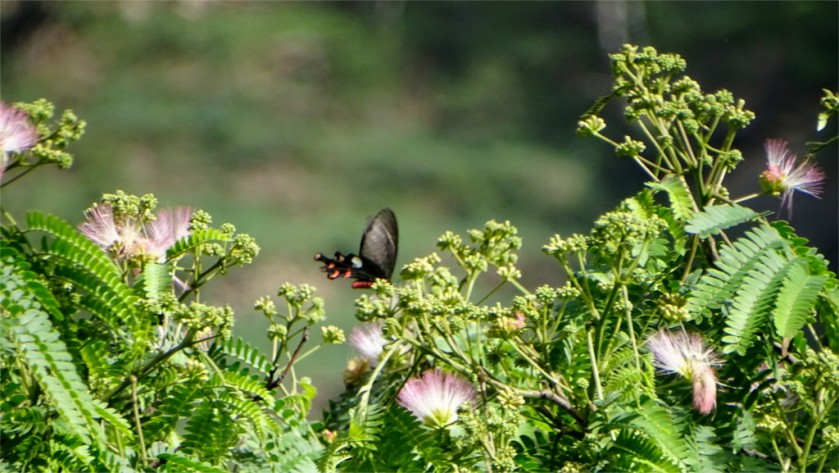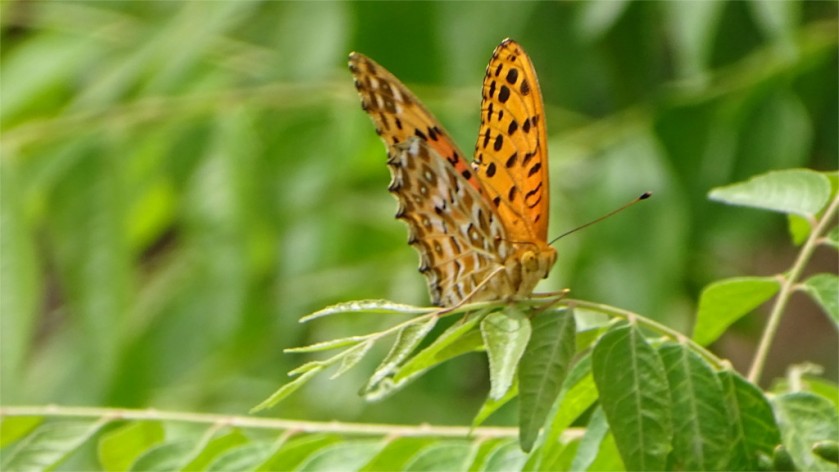Himachal Pradesh rises from the plains into the high Himalayas. On this trip the highest point we reached was Jalori pass, which is a little over 3.1 Kilometers above sea level. At this height I expected to see the butterfly called the Painted Lady (Vanessa cardui). This is the commonest of temperate butterflies, apparently found on all continents where flowers grow. We could have seen it, but I have no record of it. I keep confusing it with the other tortoiseshell butterflies. They are slippery chaps, seldom settling down long enough in one place for one to take a photo. The mountain tortoiseshell (Aglais urticae, in the featured photo) eventually settled on a flower by the path to Serolsar lake. The Young Niece was pretty excited by the sight of this plant with a butterfly “flower”. True to its descriptions, it flitted from flower to damp ground and back again. This was my first sighting of this species.
It is very slightly different from the Indian tortoiseshell (Aglais cashmiriensis, which you can see in the photo above), and in the field it is very hard to tell them apart. As you can see from the photos, the forewings are almost exactly the same, and only little details in the hindwings distinguish the two. In fact, the otherwise excellent booklet published by the Zoological survey of India on The Butterflies of Himachal Pradesh misses out on A. urticae.
By far the commonest butterfly on this walk was one I’d never seen before: the common satyr (Aulocera swaha). As we walked through the stony path to Serolsar lake, inside the forest of oaks, we saw these butterflies sitting on stones (photo above), or settling on dry leaves on the path. The Young Niece asked me what it was called, and I told her that I did not know, but would have to look it up later. I think these three are all that I noticed near the pass.
Most of our time was spent in the narrow grassy valley around the rocky course of the Falachan river at an altitude of about 2 Kilometers above sea level. This place was full of some of the common butterflies which you also see in the plains. The Indian cabbage white, various grass yellows, and, possibly, some pioneers were common. I must have missed an enormous variety of butterflies here. One I did manage to take a photo of was the plain tiger (Danaus chrysippus, photo above).
The rocky edges of the Falachan river was also good terrain for spotting butterflies. I don’t think I’d seen the common wall (Lasiommata schakra, photo above) ever before. They are found in a range between 1 and 3 Kilometers above sea level, and probably easy to photograph because they settle for longish periods in sunny spots. I think that white streak around the eye-spot in the fore wing indicates that the individual in the photo is a female; the male lacks this feature.
The generally mottled brown and yellow-orange colour of this butterfly in flight first fooled me into thinking that it was a painted lady. But when it settled on a stone, and I took the photo which you see above, it became clear that it was not. It took me some time to figure out that this was the common Punch (Dodona durga). The ZSI pamphlet on the butterflies of Himachal Pradesh says that this has been reported in May from Chamba and Shimla districts, so I’m happy to put on record this sighting in Kullu district.
Lower down, at an altitude of about 1.6 Kilometers above sea level, we started a walk to the gates of the Great Himalayan National Park, near the village of Ropa. Near the beginning of the walk, we came across the flowering tree which you can see in the photo above. There was a cloud of butterflies around it. I mistook them first for the red Helen, which belongs to peninsular India. The correct identification for the butterfly you see in the photo above is the great windmill (Atrophaneura dasarada). Later we saw that they had been joined at this tree by a large number of orange tips.
We had raced through the lower slopes, with a single stop somewhere in the district of Solan where I immediately saw the butterfly whose photo you see above. This is the common Leopard (Phalanta phalantha). I’m sure if one spent even an hour at this lower elevation, below a kilometers, one would be able to spot an enormous variety of butterflies.

